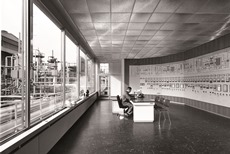Main Content
Schlieren gasworks
The history of the Schlieren gasworks started back in the 19th century.
In the 1890s, there was a rapid increase in the demand for gas from the people of Zurich as gas began to replace oil for lighting purposes. The first plant to produce gas from wood in the Platzspitz park quickly became inadequate, also because gas was now being increasingly used to generate heat. As a result, the city started to relocate the whole complex to nearby Schlieren in 1893.
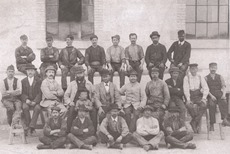
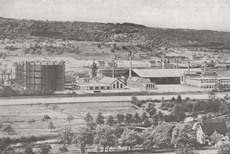
Over the next few decades, gas production needed to be modified on several occasions. The two world wars led to difficulties in the supply of bituminous coal. Consequently, gas was produced using peat from Entlebuch in the canton of Lucerne or wood conversion with both processes being laborious and uneconomical. Gas consumption even needed to be rationed during the Second World War, and 187 employees were laid off. The shift from coal to natural gas imports began in 1972 with the coking plant finally ceasing operation in 1974.

Built in 1897, the Schlieren gasworks today serves as a fitting testament to the city of Zurich’s industrial heritage and social history. The construction of the gasworks is directly related to the incorporation of the town in 1893 and to the general economic development of the city of Zurich in the period between the turn of the century and the First World War.
Gasverbund Ostschweiz AG
With its headquarters in Zurich, Gasverbund Ostschweiz AG (GVO) was founded on 31 January 1966. The aim was to merge municipal and private gasworks into a single entity to expand sales of detoxified gas using high-quality, streamlined production and distribution systems and ensure that partners received the greatest reliability possible for supplies.
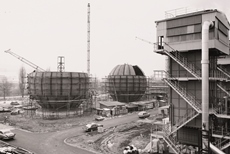
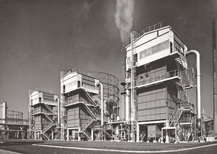
In 1969, GVO put a modern cracking plant into operation to supply its 12 partners via a grid gas pipeline network over 200 km long. This plant was used to generate detoxified gas with the same calorific value in addition to producing coal gas. The control centre was installed in the machine room, also newly constructed at the same time, and where the entire grid could be automatically remote-controlled and monitored. The entire gas distribution installations for GVO and Zurich’s gas supply were also re-designed.
GVO and its partners were integrated into the European natural gas network when the natural gas transit pipeline between the Netherlands and Italy was built across Switzerland. The switchover to natural gas took place between 1972 and 1974, with the last coal gas chamber in the coke oven plant closing on 6 May 1974 and Zurich’s coking plant in Schlieren ceasing operations as a result. This memorable event marked the end of an era of gas production from coal in Schlieren.
Erdgas Ostschweiz AG
In November 1992, the partners reached a new shareholders’ agreement and also approved a general revised version of the articles of association. In addition to a new governance model, fundamental decisions were also reached regarding pricing and the company’s purpose.
The new trade name was also intended to highlight the new direction in strategy and establish a new outward image. Gasverbund Ostschweiz AG became Erdgas Ostschweiz AG. The name change was decided at an extraordinary general meeting in Winterthur on 18 November 1993.
Today, Erdgas Ostschweiz AG is one of the four regional gas companies in Switzerland and supplies gas to its associated local suppliers in eastern Switzerland. It transports around a third of the natural gas consumed in Switzerland.
The company entered a new era in its history on 1 October 2014 when it founded its subsidiary Open Energy Platform AG . The new organisational structure is largely geared towards changed market requirements, offering a solid basis for further strategic development.

